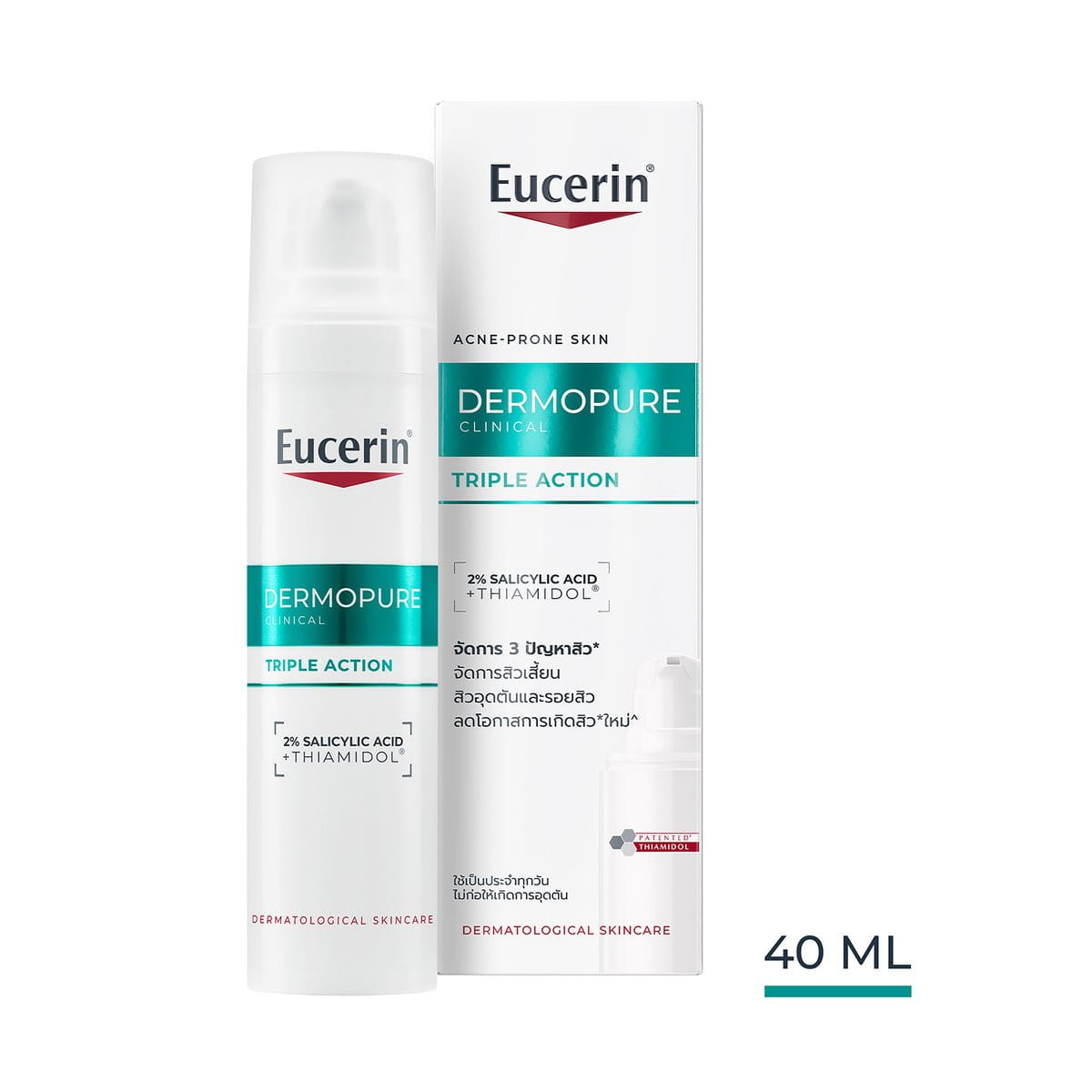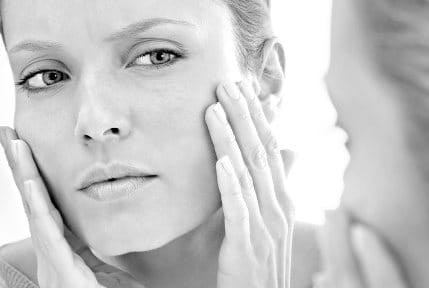While many of the symptoms of hypersensitive facial skin are non-visible, some sufferers also experience redness, particularly on the cheeks, T-zone, forehead and chin.
Signs and symptoms of redness-prone facial skin
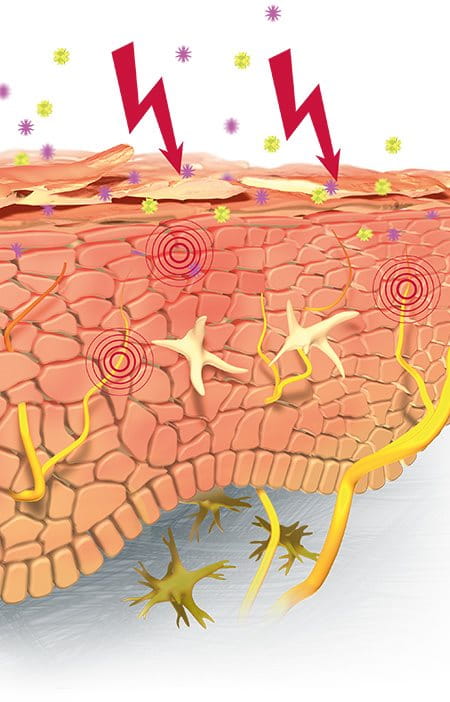
Eucerin describes the three traits of hypersensitive skin as the Hypersensitive Skin Triangle. These are: a compromised skin barrier, hyper-reactive sensory fibres in the epidermis and redness, often caused by inflammation. Skin is vulnerable to stimuli that would be tolerated by normal skin and these stressors can trigger erythema (or redness of the skin).
There are a number of reasons why people get red skin on their face, many (but not all) of which are associated with hypersensitive facial skin.
At its most extreme, hypersensitive facial skin can become reddened, flushed and inflamed by a chronic disorder called Rosacea, the symptoms of which can come and go depending on exposure to triggers.
Couperose-prone skin also has the stinging, burning and other sensations described by hypersensitive skin sufferers, but the complexion also becomes red and flushed with broken capillaries visible on the surface. Facial skin often feels tight and irritated.

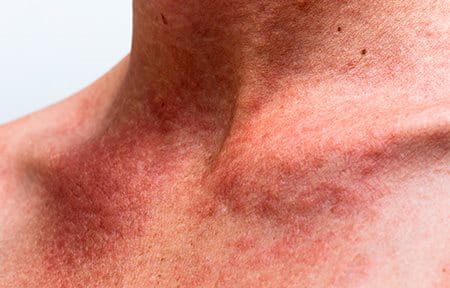
- Flushing - a physiological condition in which the face, and other areas of the body, become markedly red - can be caused by, among other things, medical drugs, fever, stress, alcohol or spices.
- Blushing - a milder form of flushing, occurs quickly when the blood vessels that supply the face dilate. This can happen when the skin is overheated and needs to cool down (due to exercise, hot ambient temperature or even a menopausal hot flash), or be the result of embarrassment or stress.
- Sunburn - a reddened and sometimes inflamed response to harmful UV rays.
- Allergic reactions - patchy blotches a result of contact with allergens.
- Injuries, infections or inflammations.
- Exercise
Read more about hypersensitive facial skin
Causes and triggers of redness-prone facial skin

Erythema can occur as a result of hypersensitive skin reacting to stimuli, such as allergens, temperature changes or chemicals. These triggers wouldn't necessarily cause a reaction in normal skin but, due to the impaired skin barrier and hyper-reactive sensory fibres, hypersensitive facial skin is more susceptible to irritation. While redness in normal skin may return to its regular state within minutes, red skin from hypersensitivity lasts significantly longer (hours, days or even months).

Hypersensitive skin can show no visible symptoms at all, although sufferers do complain of unpleasant sensations which they liken, among others, to stinging or burning. However, environmental factors (heat, cold, wind etc.), psychological factors (anger, stress, intense emotions etc.), external factors (exposure to certain chemicals, detergents, fragrances etc.), hormonal factors (menstrual cycle) and mechanical factors (pressure on the skin) can affect the skin and aggravate the underlying sensory fibres, causing redness.
Further contributing factors


Other factors can influence facial redness are: age, genetics, hormonal factors, skin dryness, race, skin pigmentation, pre-existing diseases and lifestyle. For example, in a report by the International Journal of Dermatology* the large majority of subjects with ‘‘sensitive’’ or ‘‘very sensitive’’ skin had sunburn during childhood and now redden easily after sun exposure. This could be due to skin phototype as sensitive skin mainly affects fair skinned subjects.
Increasing pollution, especially in urban environments, has led to a growth in hypersensitive facial skin. The exposed skin barrier is made more vulnerable by the ongoing aggressors in the air and the constant activation of the underlying sensory fibres.
"More and more people are affected by allergic reactions and these contribute to hypersensitive redness."
* International Journal of Dermatology 2011, 50, 961–967
Solutions available for redness-prone skin
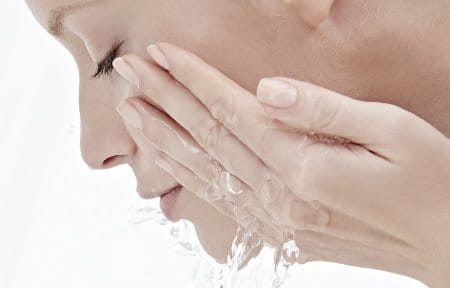
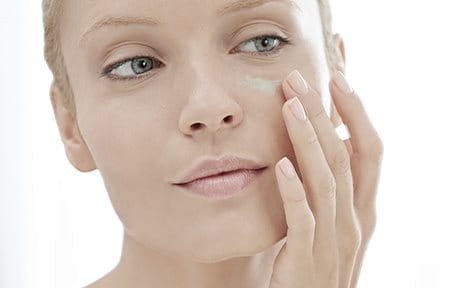
Prevention will always be better than cure so the best thing is to avoid all known triggers. However, this is not always practical so the next most important thing to do is to use skin care products to restore and protect the impaired skin barrier. To minimise the chance of intolerance or allergic reactions use 'pure' or '0%' formulas that only contain a limited number of ingredients and are free from potential irritants such as perfume or alcohol and look for products that use anti-contamination packaging.
The Eucerin Hypersensitive Skin ranges contain a unique active ingredient called SymSitive* which effectively acts as a sensitivity regulator directly at the source of hyper-reactivity, thus relieving unpleasant sensations instantly. Used regularly, Eucerin Hypersensitive products make skin more resistant to internal and external stress, offering long-lasting skin comfort.
* =reg.tm of Symrise AG, Germany
Our brand values

We deliver a holistic dermo-cosmetic approach to protect your skin, keep it healthy and radiant.

For over 100 years, we have dedicated ourselves to researching and innovating in the field of skin science. We believe in creating active ingredients and soothing formulas with high tolerability that work to help you live your life better each day.
